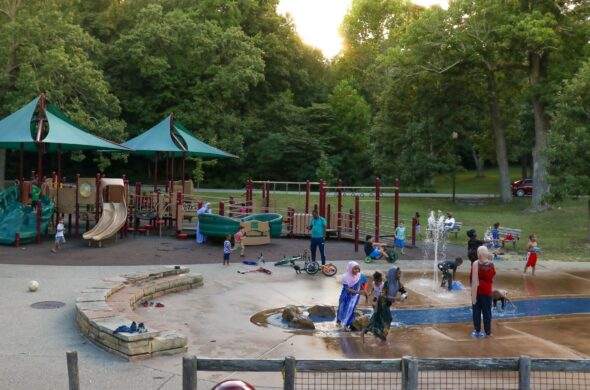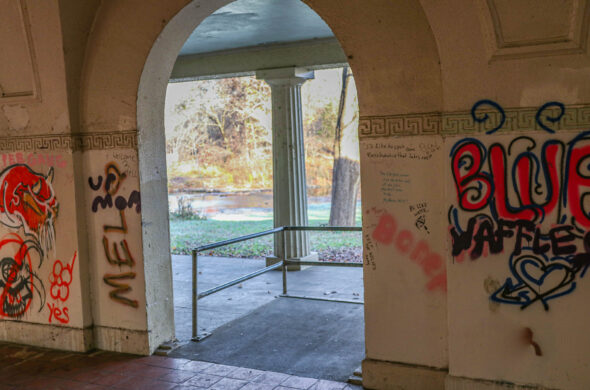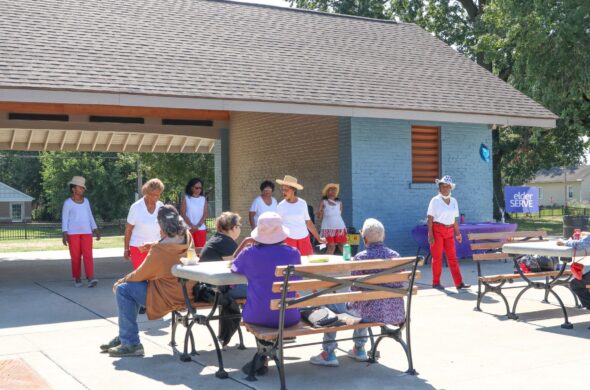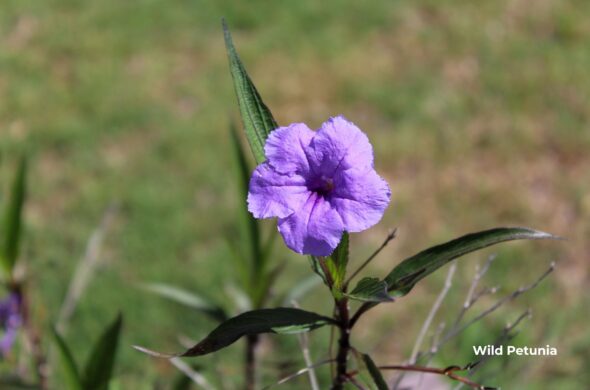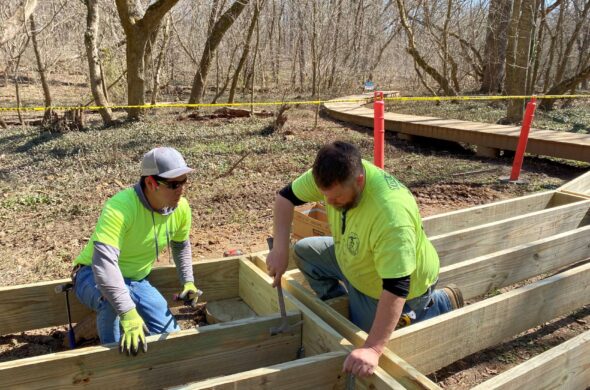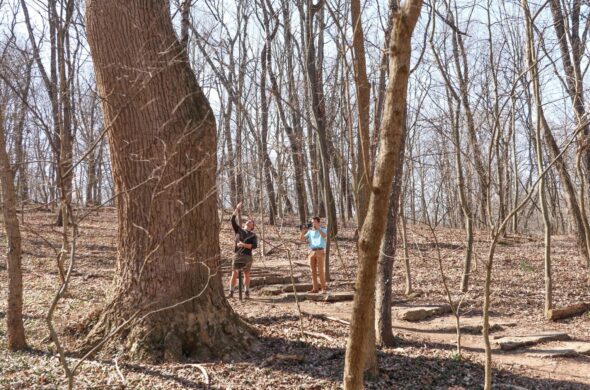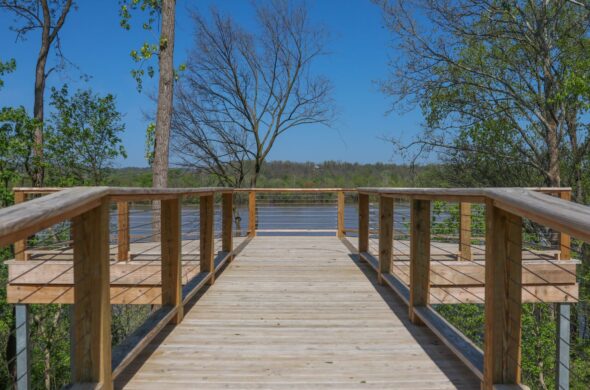
GREAT NEWS! The number of tree saplings growing in Cherokee and Seneca Parks has tripled in areas cleared of invasive bush honeysuckle as compared to areas not cleared. Over the last few years Olmsted Parks Conservancy crew and volunteers have cleared invasive species from 300 acres of parkland. This exciting outcome was revealed by two separate University of Louisville research projects in the Frederick Law Olmsted Parks led by Dr. Margaret Carreiro.
After a seed germinates it becomes a seedling and if it survives to the next growing season it is considered a sapling. Once a tree is sapling size the likelihood it will become a mature tree significantly increases. In a woodland environment, there are many difficulties a seed must overcome to become a sapling. The challenges are even greater in woodlands dominated by invasive species, as in Olmsted Parks, where bush honeysuckle drains the soil of nutrients and moisture needed to sustain seedling growth.
Maple, oak, hickory, tulip poplar, hackberry, wild cherry, and sassafras trees are some of the native saplings found in areas cleared of bush honeysuckle. These trees will provide many benefits to our community for generations to come. Dr. Carreiro’s findings support the long-term value of invasive plant management in Olmsted Parks through the Olmsted Parks Conservancy’s Woodland Restoration project.
Find something similar: Cherokee Park Seneca Park
